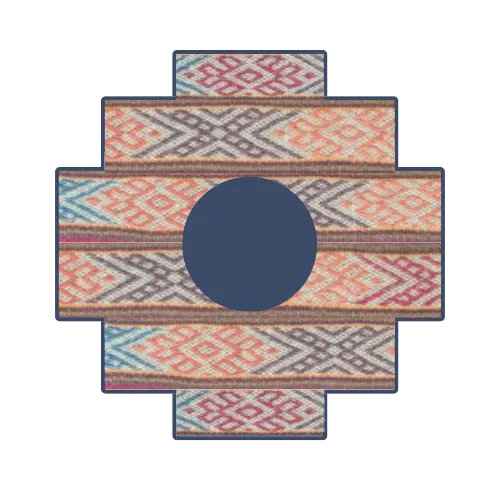Organic Cotton
All You Need to Know
Lately, there’s been growing talk about the changes we can make in our daily lives to support environmental sustainability—whether it’s cycling more, using public transport, eating less meat, or choosing organic products. As we become more aware of the benefits of the organic lifestyle, it’s crucial to understand what “organic” truly means, especially in industries like fashion. While it’s easy to assume that organic equals “healthier” or “greener”, the full story is much more impactful.
This blog was born from our desire to explore the impact of choosing organic materials, particularly in textiles. Inspired by our journey, we aim to share what we learn and raise awareness about sustainable fashion. Focusing on organic cotton, we’ll cover what it is, why it matters, and how it compares to conventional cotton. Through this blog, we hope to promote a deeper understanding of how our fashion choices can contribute to a more sustainable future.
What is Organic Cotton?
Organic cultivation prohibits the use of synthetic fertilizers, pesticides, or genetically modified (GM) seeds. It also requires practices like composting, the use of green manure and crop rotation to naturally enhance soil fertility. This definition, supported by organizations like WWF, applies to organic agriculture across the board.
However, different industries have additional certification that build on this foundation. In the cotton industry, for example, the Global Organic Textile Standard (GTS) goes beyond agriculture. As the leading processing standard for organic textiles, GOTS ensure that from the field to finished product, organic cotton protects both the planet and the people who produce it.
GOTS includes critical environmental and labor standards, such as banning heavy metals and toxic dyes, enforcing water and waste management policies and requiring fair treatment and protection of workers. You can read more about GOTS standar on our Certifications page.
Why is Organic Cotton Important?
You may wonder: Can buying organic products, even in small quantities, really make a difference?
I asked myself the same question and was surprised to find that the answer is yes. Cotton is everywhere, it makes up about 50% of all clothing and household textiles and 85% of all natural fibers (followed by wool, linen and hemp). Choosing organic products helps create a demand for organic practices, practices that are neither easy nor cheap to implement.
Organic farming practices are not easy or cheap to implement. Farmers, especially those in developing countries, often lack the resources to transition. However, when consumer demand grows, governments and organizations take notice and begin to support those farmers with training and financial incentives. The more we demand organic products; the more support there is to make it accessible.
Cotton is not just essential for the textile industry that makes your favorite t-shirt or blouse, it’s also a vital source of income for millions of farmers who depend on its production. In Pakistan alone, the 7th largest cotton producer in the world, cotton and textile products account for 70% of export revenues.
Is important to highlight that over 90% of cotton farmers live in developing countries, where cotton production employs 7% of the total labor force. This shows how deeply cotton impacts livelihoods and economies in these regions.
Convention vs Organic Cotton
1. Pesticides and Insecticides
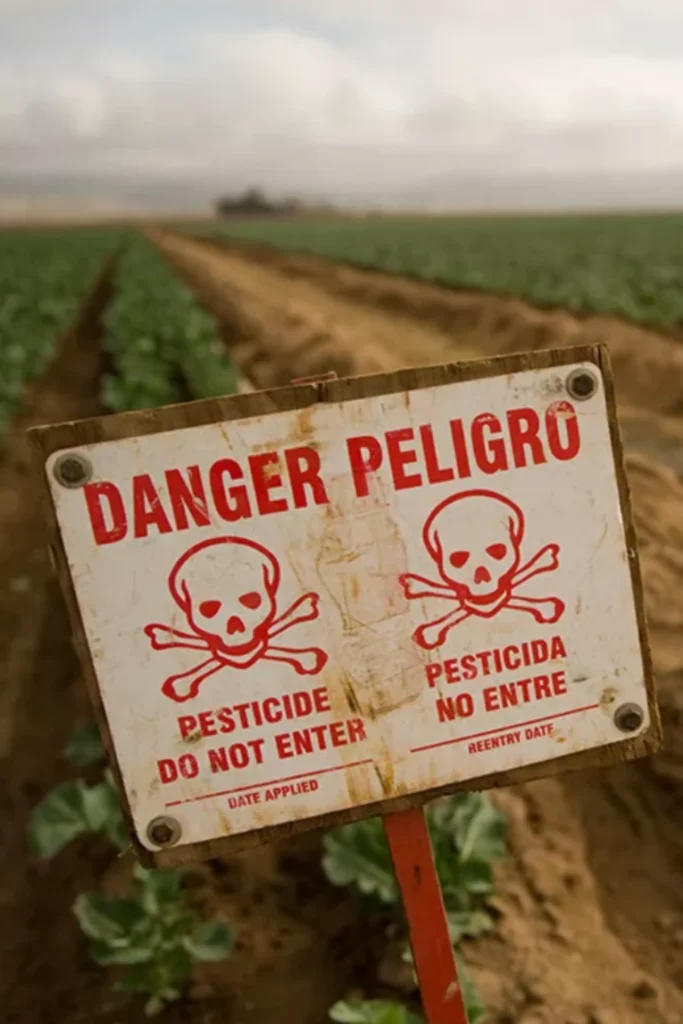
Conventional cotton uses, around 5% of global pesticides and 11% of insecticides. These chemicals kill soil biodiversity, release nitrous oxide (a greenhouse gas 300x more potent than CO2) and harm human health. Studies show 44% of conventional cotton farmers suffer pesticide poisoning each year. Without proper protective gear or training, exposure extends to entire communicates through polluted water and air.
Organic cotton, by contrast, prohibits the use of synthetic pesticides and insecticides. Instead, they use:
- Biological pest control – using nature to suppress harmful pests by maintaining healthy soil full of beneficial bacteria and fungi that help combat diseases and pests.
- Crop rotation – alternating crops on the same land to enrich soil, improve nutrient use, and reduce pests and weeds, while boosting biodiversity.
- Companion planting – growing certain plants together to naturally repel pests and enhance biodiversity.
1. Pesticides and Insecticides
Conventional cotton uses, around 5% of global pesticides and 11% of insecticides. These chemicals kill soil biodiversity, release nitrous oxide (a greenhouse gas 300x more potent than CO2) and harm human health. Studies show 44% of conventional cotton farmers suffer pesticide poisoning each year. Without proper protective gear or training, exposure extends to entire communicates through polluted water and air.
Organic cotton, by contrast, prohibits the use of synthetic pesticides and insecticides. Instead, they use:
- Biological pest control – using nature to suppress harmful pests by maintaining healthy soil full of beneficial bacteria and fungi that help combat diseases and pests.
- Crop rotation – alternating crops on the same land to enrich soil, improve nutrient use, and reduce pests and weeds, while boosting biodiversity.
- Companion planting – growing certain plants together to naturally repel pests and enhance biodiversity.

2. Use of Water
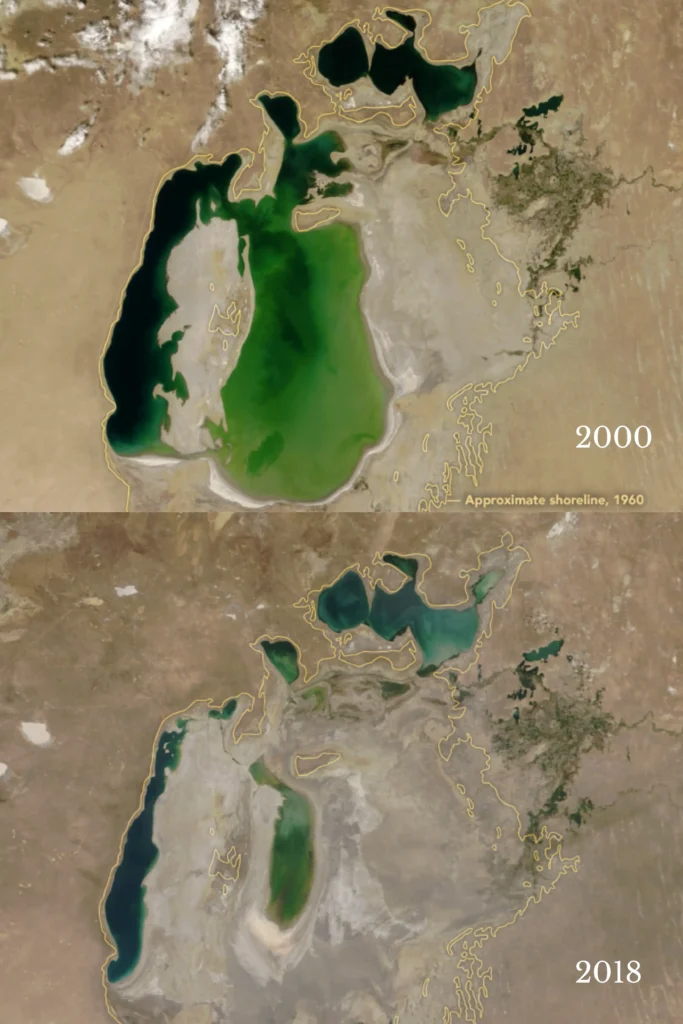
How much water does it take to make one t-shirt? Estimates range between 2000-3000 liters. Cotton farming, especially with inefficient irrigation, puts severe pressure on water resources. For instance, the Aral Sea, once the world’s fourth-largest freshwater lake, has lost 90% of its volume due to unsustainable cotton irrigation in Uzbekistan and Turkmenistan. This leads not only to biodiversity loss but also to water scarcity for local communities who rely on these resources.
Many cotton farmers, especially in developing countries, depend on cotton for survival. Without adequate government support or regulation, they are often forced to prioritize crop yield over sustainable water use, particularly during droughts.
However, organic cotton reduces water use in three important ways:
- Healthier soil: organic practices improve soil organic matter, which increases water retention and more efficient absorption
- Fewer inputs: with less chemical dependence, water pollution is reduced
- Better manufacturing standards: GOTS certification also requires water management policies during textile processing to reduce waste during textile processing.
2. Use of Water
How much water does it take to make one t-shirt? Estimates range between 2000-3000 liters. Cotton farming, especially with inefficient irrigation, puts severe pressure on water resources. For instance, the Aral Sea, once the world’s fourth-largest freshwater lake, has lost 90% of its volume due to unsustainable cotton irrigation in Uzbekistan and Turkmenistan. This leads not only to biodiversity loss but also to water scarcity for local communities who rely on these resources.
Many cotton farmers, especially in developing countries, depend on cotton for survival. Without adequate government support or regulation, they are often forced to prioritize crop yield over sustainable water use, particularly during droughts.
However, organic cotton reduces water use in three important ways:
- Healthier soil: organic practices improve soil organic matter, which increases water retention and more efficient absorption
- Fewer inputs: with less chemical dependence, water pollution is reduced
- Better manufacturing standards: GOTS certification also requires water management policies during textile processing to reduce waste during textile processing.

3. Less GHG Emissions
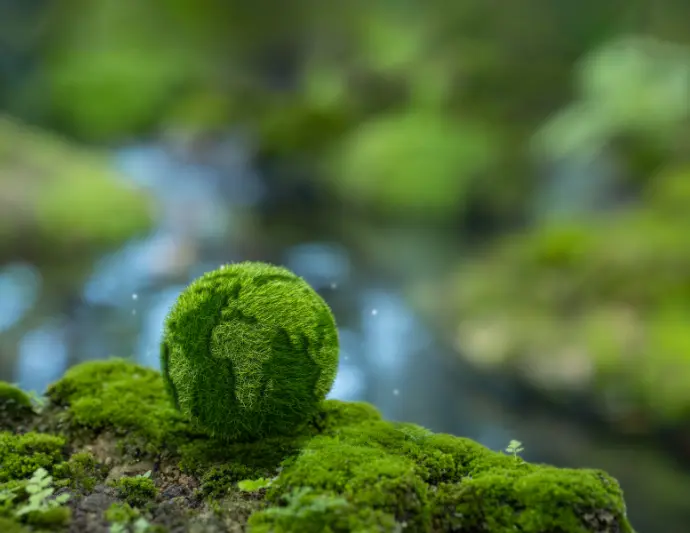
Agriculture contributes to 18-22% of the total global gas emissions according to The International Panel on Climate Change (IPCC) and around 75% of global nitrous oxide. A major contributor is synthetic fertilizers, which is made using hydrogen from fossil fuels (mostly methane), which is used to convert atmospheric nitrogen into ammonia, the main ingredient in most fertilizers.
Organic agriculture eliminates these emissions by using natural alternatives:
- Compost: decomposed organic matter like kitchen scraps, animal waste and crop residue that is broken down into humus-rich soil amendment improving soil health, structure and carbon retention
- Green manure: a practice within crop rotation, where plants like clover, alfalfa and mustard are grown before the main crop (cotton) to enrich the soil. These are not harvested but are tilled into the soil or left to decompose, helping to:
- Absorb nutrients
- Fix nitrogen
- Improve soil structure and organic matter
- Support biodiversity and suppress weeds (mustard is known for being a natural biofumigant).
4. Carbon Sequestration
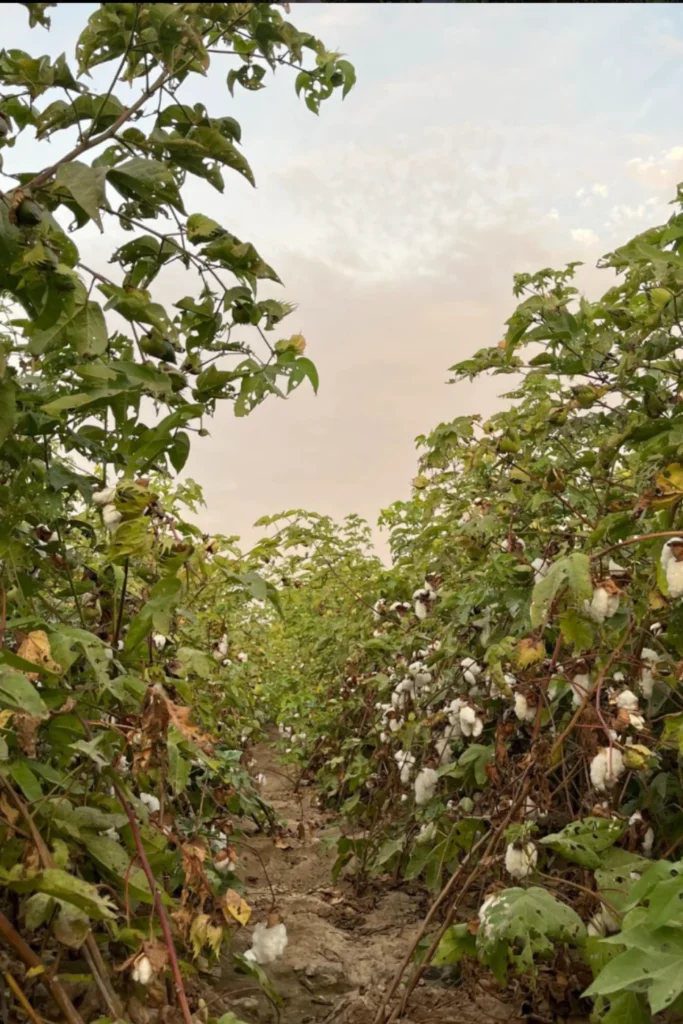
We often hear that plants absorb CO₂ and that’s absolutely true. But what many don’t realize is how much CO₂ plants and soil can store. It depends a lot on the health of the soil, especially its soil organic matter (SOM), according to some studies.
SOM is made from decomposed plant and animal materials. In organic systems, compost and green manure help build SOM, which allows carbon to stay in the ground longer. Since organic practices avoid synthetic inputs, decomposition happens more slowly and stably, keeping more CO₂ in the soil.
In contrast, conventional farming uses synthetic fertilizers and frequent tilling, which break down SOM too fast and release CO₂ back into the air.
So by switching to practices that build SOM, like using compost, avoiding synthetic inputs, and minimal soil disturbance, organic agriculture helps store more carbon and reduce greenhouse gas emissions overall.
4. Carbon Sequestration
We often hear that plants absorb CO₂ and that’s absolutely true. But what many don’t realize is how much CO₂ plants and soil can store. It depends a lot on the health of the soil, especially its soil organic matter (SOM), according to some studies.
SOM is made from decomposed plant and animal materials. In organic systems, compost and green manure help build SOM, which allows carbon to stay in the ground longer. Since organic practices avoid synthetic inputs, decomposition happens more slowly and stably, keeping more CO₂ in the soil.
In contrast, conventional farming uses synthetic fertilizers and frequent tilling, which break down SOM too fast and release CO₂ back into the air.
So by switching to practices that build SOM, like using compost, avoiding synthetic inputs, and minimal soil disturbance, organic agriculture helps store more carbon and reduce greenhouse gas emissions overall.

Other Advantages of Organic Cotton
Thanks to third-party certifications like GOTS, organic cotton ensures sustainability beyond just the farming stage—it covers the entire supply chain.
As outlined in GOTS Handbook section 2.3.2:
“The term ‘organic’… is not just about the absence of synthetic fertilisers, pesticides, or GMOs; it’s about a comprehensive, environmentally conscious approach to fibre production.”
GOTS also protects workers. Section 2.3.7 highlights:
“GOTS 7.0 emphasises human rights and social criteria… Certified Entities must respect workers’ rights across all textile processing, manufacturing, warehousing, packaging and distribution stages.”
This means workers must have proper protection. For example, GOTS bans the use of toxic dyes and hazardous chemicals, reducing risks for those handling fabrics.
Similarly, eliminating toxic chemicals during the manufacturing process removes the health risks associated to wearing the final product. Conventional cotton fabrics can retain chemical residues that may cause skin irritation, allergic reactions and potentially long-term health issues. In contrast, organic cotton fabrics are naturally hypoallergenic, making it a safer choice, especially for sensitive skin.
You can read more about GOTS on our Certifications page.
Another often overlooked benefit of organic cotton is its superior quality. Because organic cotton fibers are handpicked and not exposed to harsh chemicals, they remain longer, stronger and more intact than conventional cotton. This results in softer, more durable fabrics that resist wear and tear over time. With proper care (and without the need to wash after every wear), organic cotton products can last for years, making it sustainable. In the long run, choosing quality over quantity is not only better for the plant but also for your wardrobe.
Small Changes, Big Impact
The switch toward organic cotton is not just about wearing better fabric, it is about supporting a more ethical, sustainable and health-conscious system. From healthier, more biodiverse soils and reduced emissions to safer working conditions, more responsible water use and less chemical exposure, organic cotton offers a path to sustainability that respects both people and planet across the entire supply chain.
While organic products may cost more, that price reflects the real investment of time, labour and care needed to grow and process cotton responsibly. By choosing organic, you are not just buying a t-shirt, you are supporting a fashion industry that values quality, fairness and environmental responsibility.
Every purchase we make sends a message, so let’s make it count. Here are a few small actions you can take today:
- Swap disposables for reusables: Replace your one-use items like cotton swabs and makeup remover wipes with washable, reusable alternatives. Adding them to your laundry uses far less water than producing single-use products
- Rethink fast fashion: the demand for fast fashion has led to overproduction, 100 billion garments a year, with 85% ending up in landfills or incinerators. Since cotton is the most used natural fiber in the industry, shifting your purchase to organic options can help reduce this. Instead of buying five basic t-shirts from a fast-fashion brand, choose one high-quality organic item that benefits your health, supports fair labor and protects the soil where it was grown.
It may seem like a small step but multiplied by million of us, these small changes create a big impact. Every choice adds up. So lets choose well because sustainability is in what we wear.
Frequently Asked Questions
- What is organic cotton? What is organic agriculture?
Organic agriculture avoids synthetic fertilizers, pesticides, and GMOs, using natural methods like composting, green manure, and crop rotation to build healthy, biodiverse soil. - Why is organic cotton better for the environment?
Organic cotton reduces water use, avoids synthetic chemicals, supports biodiversity, and helps sequester carbon in healthy soil—making it far more sustainable than conventional cotton. - Is organic cotton better for your skin?
Yes. Unlike conventional cotton, organic cotton doesn’t retain toxic chemical residues that can cause skin irritation or allergic reactions. It’s also naturally hypoallergenic. - Does organic cotton use less water?
Yes. Organic farming methods improve soil’s ability to retain water and reduce water pollution, while GOTS certification ensures responsible water use during textile processing. - How does organic cotton help reduce greenhouse gas emissions?
Organic farming avoids synthetic fertilizers, which are a major source of nitrous oxide—a potent greenhouse gas. It also builds soil organic matter that stores carbon more effectively.

- Is organic cotton really more sustainable?
Absolutely. It benefits the environment, supports fair labor, uses fewer resources, and is safer for both producers and consumers. - Is organic cotton worth the higher price?
Yes. The price reflects ethical labor, safer farming practices, and higher-quality materials. You’re investing in durability, health, and a cleaner planet. - Is organic cotton more durable than conventional cotton?
Yes. Because organic cotton fibers are handpicked and not weakened by harsh chemicals, they remain longer, stronger, and result in softer, longer-lasting fabrics. - Can choosing organic cotton really make a difference?
Yes, even small changes matter. Consumer demand drives systemic change, influencing farming practices, industry standards, and global sustainability efforts. - How can i start switching to organic cotton today?
Start by replacing disposable cotton items (like makeup wipes) with reusables and avoiding fast fashion in favor of durable, organic garments.
